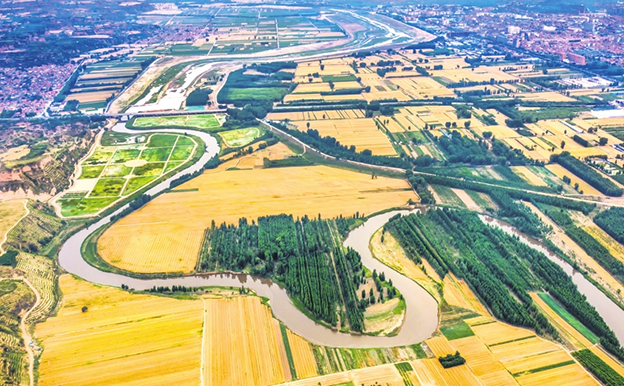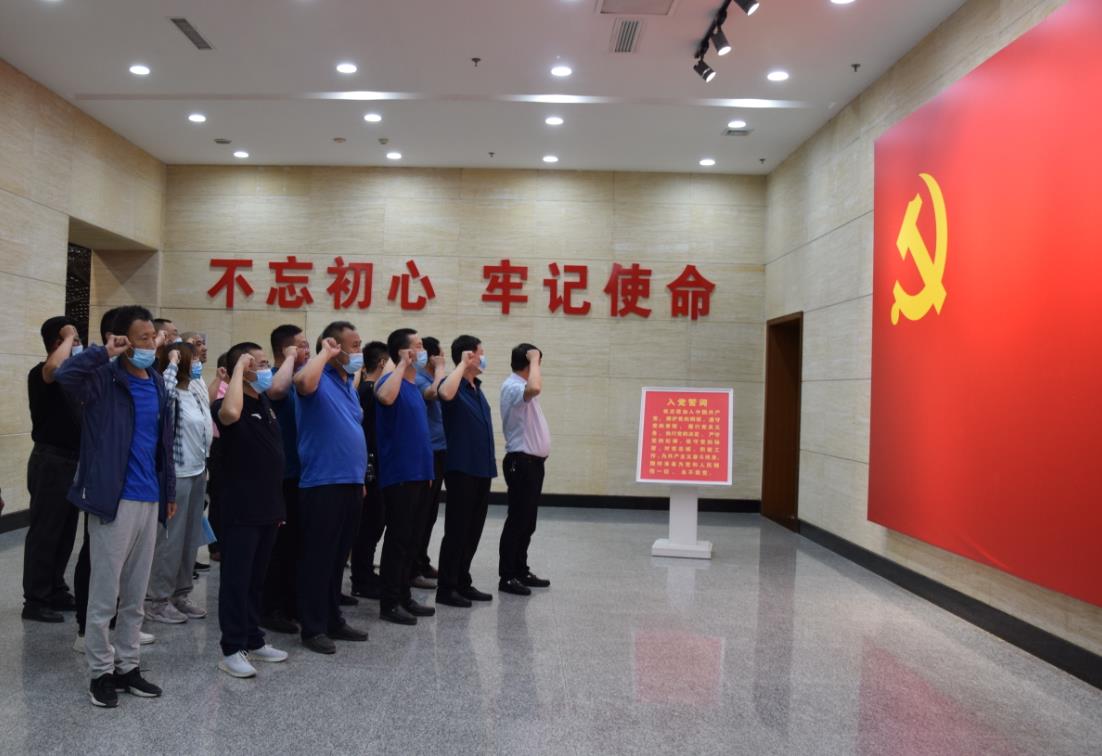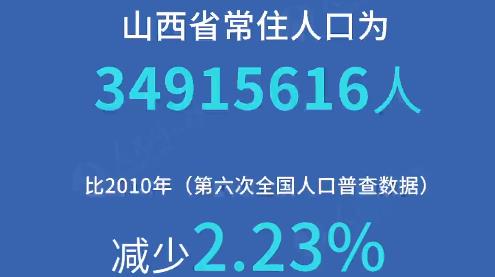
Initial progress has been made in improving the environment of Fenhe River after years of efforts by local governments and residents. XUE JUN / FOR CHINA DAILY
When Yuan Lili, a resident of Taiyuan, capital of Shanxi province, drove home alongside the Huyu Stream on July 11, she said the journey was a more pleasant experience compared to several years ago.
Huyu is a branch of the Fenhe River, the second-largest river in Shanxi. Yuan recalled the former state of Huyu, saying it was a stream filled with wastewater and garbage.
"It was so stinky that you could not roll down your car window,"Yuan said. "But now there is no more garbage or wastewater. The water has become clean and the stream has turned into a scenic belt with trees and grass on both sides."
Yuan said she is pleased with the improved environment of the stream.
Like Huyu, fundamental changes have taken place throughout the Fenhe River water system.
The 716-kilometer-long Fenhe has been a symbol of Shanxi for thousands of years. Running through 45 counties and districts of six cities, the river is the second-largest tributary of the Yellow River.
Since residents began using the Fenhe to irrigate farmlands more than two millennia ago, the river has played an important role in nurturing the local economy.
However, with the development of an economy reliant on coal mining and heavy industries, the river became severely polluted in recent decades.
Yang Wei, a cycling enthusiast, recalled the conditions:"The Fenhe River area was an unpleasant place some 20 years ago.
"It smelt badly with garbage littered everywhere and wastewater discharged into the almost dry river. As there were no trees and grass along the river, the area was often covered in dust in springtime.
"Nobody would want to cycle or walk along the river," Yang added.
Over the past decades, the Fenhe had seen a continued deterioration in its water quality. Water samples at major monitoring points were rated as worse than the grade V standard, according to the Shanxi Department of Ecology and Environment.
Grade V is the standard for the worst water quality in China.
Shanxi began a provincial campaign to improve the environment of the Fenhe and other rivers in 2015. It was marked by the release of a river improvement plan for 2015-30, according to Pan Xianzhang, chief of the Shanxi Department of Ecology and Environment.
Pan said curbing pollution from industrial and household wastewater is the most crucial part of the campaign. Wastewater discharge used to account for about 90 percent of the runoff of the Fenhe River.
"As the river flows across six cities in Shanxi, we have required concerted efforts in pollution control in various regions," Pan said.
The official said the province stepped up its pace in improving the river's environment since May 2019.This was when the provincial government issued a document requiring a fundamental change in the Fenhe's water quality by 2020.
As a result of the joint efforts among various governmental institutions in different regions, Shanxi's river improvement campaign achieved progress this year.
By the end of June, all the monitoring points along the river reported water quality better than grade V.It was the best performance in three decades, according to the Shanxi Department of Ecology and Environment.
With efforts continuing to improve water quality, provincial authorities have launched new moves to increase runoff volume and green the areas along the river.
A great number of wetland parks have been built along the river in recent years.
In Dongjia village of Jinzhong city, villager Kang Liyi operates a grocery store near the point where the Fenhe and Taiyu Stream meet.
"As a wetland park has been established at the confluence, more tourists come to our village and my business is getting better," Kang said.
He added that the wetland park and other embankment enhancing projects have played an important role in flood control, making local farming and people's lives safer.
In the next 15 years, Shanxi will invest more than 87 billion yuan ($12.42 billion) in improving the environment of the Fenhe River, according to Pan.
"We have made initial success this year. However, there is a long way to go to reach satisfactory results in improving the environment of the Fenhe," the official said.
By YUAN SHENGGAO
 山西路桥:党建引领 建好“四好农村路”山西路桥建设集团党委扎实开展“党建质量提升年”,实施“六大工程”,立足“十四五”高质量、高速度、高效益发展的战略基点,全面提高党建质量和党建引领发展水平,为打造“国内一流的交通基础设施投资、建设、施工现代化企业集团”提供坚强政治保障。
山西路桥:党建引领 建好“四好农村路”山西路桥建设集团党委扎实开展“党建质量提升年”,实施“六大工程”,立足“十四五”高质量、高速度、高效益发展的战略基点,全面提高党建质量和党建引领发展水平,为打造“国内一流的交通基础设施投资、建设、施工现代化企业集团”提供坚强政治保障。
 常住人口3491万 山西人口普查数据"出炉"山西省统计局向社会通报山西省第七次全国人口普查主要数据。数据显示,山西省常住人口为34915616人,比2010年(第六次全国人口普查数据,下同)减少2.23%,年平均减少0.23%。山西省常住人口总量减少,主要受人口流动变化等因素影响。
常住人口3491万 山西人口普查数据"出炉"山西省统计局向社会通报山西省第七次全国人口普查主要数据。数据显示,山西省常住人口为34915616人,比2010年(第六次全国人口普查数据,下同)减少2.23%,年平均减少0.23%。山西省常住人口总量减少,主要受人口流动变化等因素影响。